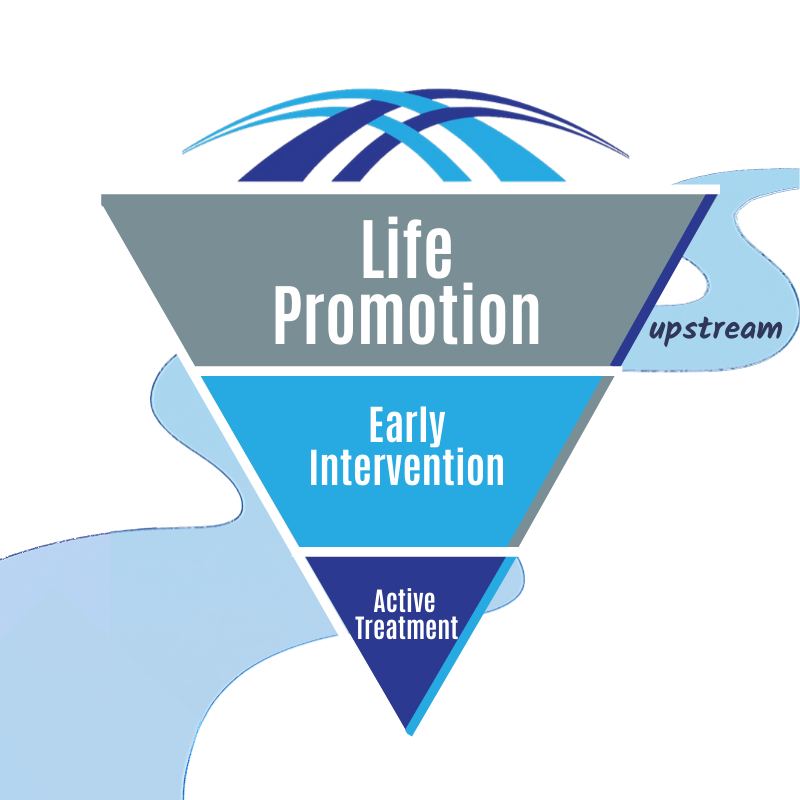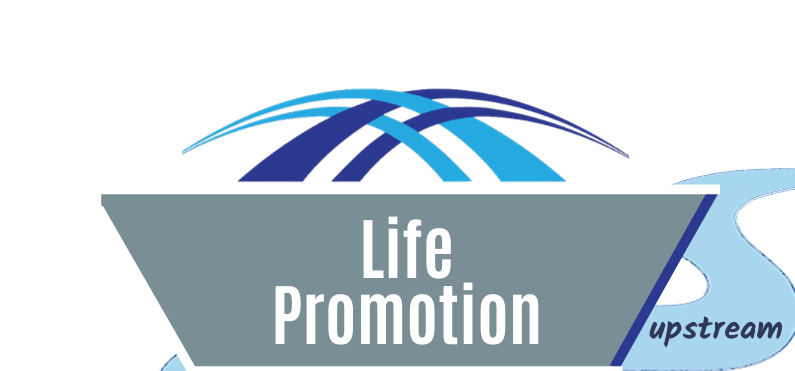Upstream Suicide Prevention

Effectively combating the problem of suicide among Veterans requires a comprehensive strategy that includes life-saving crisis intervention approaches as well as efforts further “upstream.” This Upstream Suicide Prevention video series aims to complement the crucial, indispensable work of traditional suicide prevention efforts with consideration of additional approaches and topics that may facilitate both suicide prevention and life promotion.
The brief video clip below features one of the speakers in this 3-part video series, sociologist Chris Smith, who introduces the idea of human flourishing by exploring a fundamental question: what is a good life?
Upstream Videos
Prevention Model
Resources
Upstream Suicide Prevention Video Series
These videos have been designed with military and VA chaplains in mind, though they have utility for broader audiences. There are many possible topics to cover to expand knowledge about suicide prevention. This video series is not intended to be exhaustive, nor is it exclusive to Service members and Veterans; rather, the series touches on common aspects of the human experience that have relevance for all people – community, relationships, meaning and purpose, and resilience.
Video #1: Human Flourishing
This video features three speakers – sociologist Chris Smith, psychiatrist and practical theologian Keith Meador, and Rabbi Dayle Friedman – who discuss the importance of meaning, purpose, and community in promoting human flourishing.
Video #2: Stress and Resilience
The speakers in this video – Rabbi Dayle Friedman and sociologist Chris Smith – address various causes of stress, distress, and emotional suffering, as well as ways to cope in the face of such challenges.
Video #3: Demographic Considerations
The final video in this series explores specific demographic considerations that are of relevance to Service member and Veteran populations: emerging adulthood, masculinity, and women Veterans and Service members. Speakers include sociologist Chris Smith, research psychologist Derek Griffith, and clinical psychologist Sarah Wilson.
Comprehensive Suicide Prevention Model
From a public health perspective, prevention of disease – and in this case, suicidal distress – can be thought of as being on a continuum that ranges from primary to secondary to tertiary prevention. Primary prevention targets the largest portion of the population and thus is the largest part of the model. As the scope narrows from the general population to those at heightened risk for experiencing suicidal distress, and then further narrows to those who are already experiencing suicidal distress, the nature of intervention shifts.
Roll over the image of our suicide prevention model below for a brief description of the target population and objective of each “level” of intervention on the continuum.



It is important to remember that the prevention continuum is fluid. There is ‘gray area’ between the levels, and sometimes our interventions do not fit neatly into one level. As you consider ways to facilitate movement upstream, we encourage you to think flexibly about how to move between and intervene across levels of prevention.
Primary Prevention (Life Promotion)
From a public health perspective, primary prevention targets the largest group of people who may be at risk of developing a health issue. Given that suicide affects people of every possible strata of the population, primary-level suicide prevention efforts should target everyone. But what does suicide prevention look like for a person who has never thought about ending their life? One approach is to foster resilience by cultivating lives of meaning and purpose through life promotion. Many people have not given much thought to what gives their lives meaning and purpose, let alone developed behaviors, knowledge, and habits that promote those values in their lives. Furthermore, values can change over time, and consequently people may benefit from regularly checking in with themselves about what flourishing looks like for them, and whether they are moving toward or away from flourishing. Approaching primary prevention with this broad understanding of suicide prevention as life promotion also helps combat the stigma that can be associated with suicide.
Secondary Prevention (Early Intervention)
Secondary prevention targets a subgroup within the larger population that is identified as being at heightened risk for a health problem. The goal is to prevent the disease or problem from occurring. When thinking about suicide prevention, this “subgroup” is remarkably diverse. There are many factors that increase risk for suicide, some of which are demographic (e.g., White males over age 50) while others are circumstantial (e.g., having recently experienced the death of a loved one). A risk factor of interest for Service members and Veterans is the transition from military service to civilian life. While not every transitioning Service member is necessarily at risk for suicide, secondary prevention efforts can focus on identifying individuals at heightened risk as well as coordinating care for and outreach to those individuals.For more information about how VA Integrative Mental Health is supporting care in transition, click here.
Tertiary Prevention (Active Treatment)
Tertiary prevention efforts are focused on the smallest subset of the population – specifically those who already have a disease or suffer from an affliction. Tertiary prevention is akin to disease or symptom management, with the goal of preventing the condition from getting worse. Regarding suicide prevention, the objective of tertiary care is to intervene in instances of acute distress or ongoing vulnerability in order to provide crisis care and/or stabilization.
Over time, care may be provided at different points across the continuum. Our commitment is to nurture engagement and collaboration of providers and communities across this continuum of care.
Resources
Veterans Crisis Line and Chat:
https://www.veteranscrisisline.net/get-help/chat
S.A.V.E. Suicide Prevention Training:
https://psycharmor.org/courses/s-a-v-e/
Local Resource Locator:
https://www.veteranscrisisline.net/get-help/local-resources
Uniting for Suicide Postvention*:
https://www.mirecc.va.gov/visn19/postvention/
*Suicide postvention is an integral part of comprehensive suicide prevention. Postvention focuses on providing support to those impacted by suicide loss, in the immediate aftermath and across time.



















